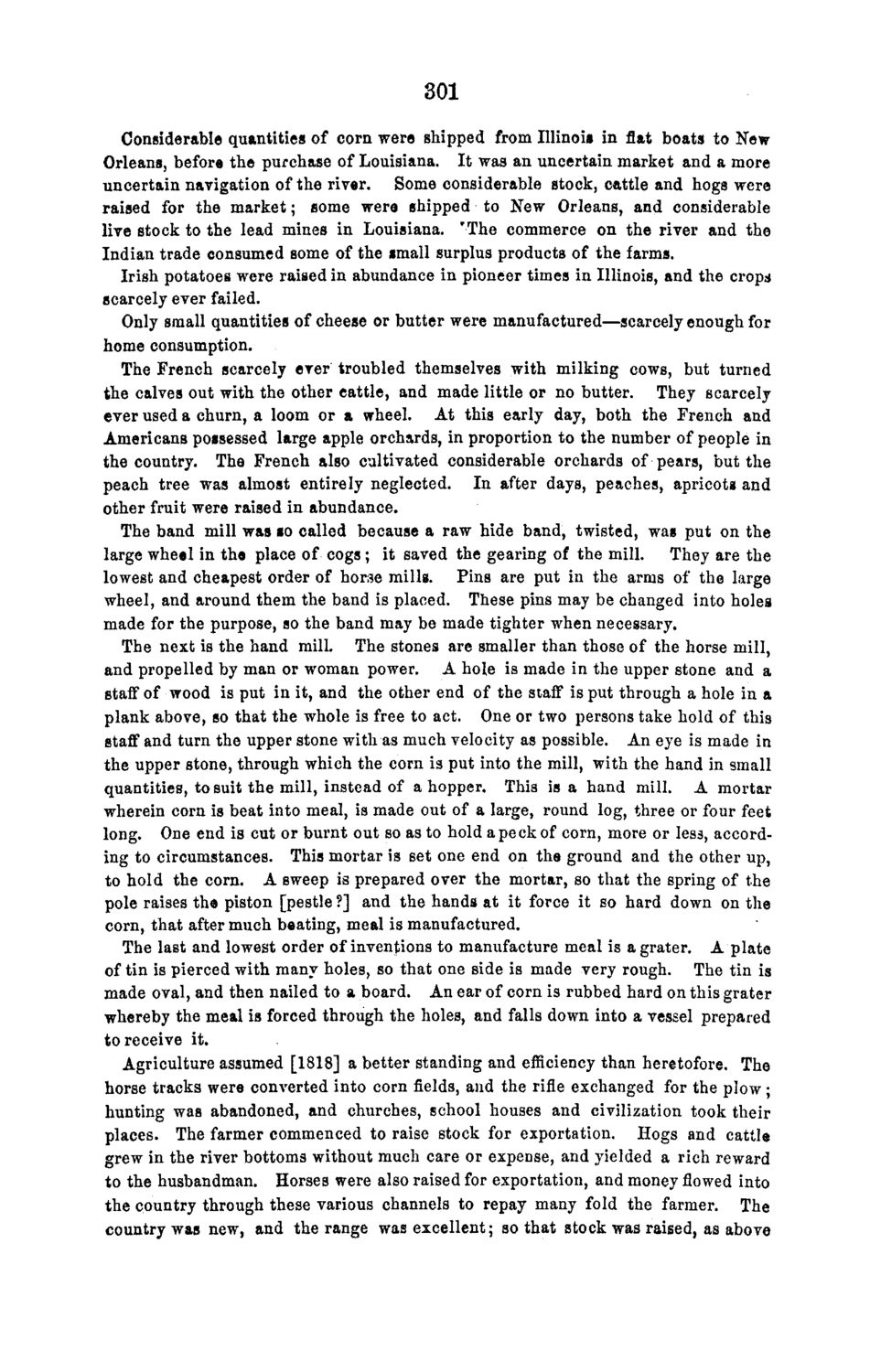| |
| |
Caption: Board of Trustees Minutes - 1868
This is a reduced-resolution page image for fast online browsing.

EXTRACTED TEXT FROM PAGE:
301 Considerable quantities of corn were shipped from Illinois in flat boats to New Orleans, before the purchase of Louisiana. It was an uncertain market and a more uncertain navigation of the river. Some considerable stock, cattle and hogs were raised for the market; some were shipped to New Orleans, and considerable live stock to the lead mines in Louisiana. 'The commerce on the river and the Indian trade consumed some of the small surplus products of the farms. Irish potatoes were raised in abundance in pioneer times in Illinois, and the crops scarcely ever failed. Only small quantities of cheese or butter were manufactured—scarcely enough for home consumption. The French scarcely ever troubled themselves with milking cows, but turned the calves out with the other cattle, and made little or no butter. They scarcely ever used a churn, a loom or a wheel. At this early day, both the French and Americans possessed large apple orchards, in proportion to the number of people in the country. The French also cultivated considerable orchards of pears, but the peach tree was almost entirely neglected. In after days, peaches, apricots and other fruit were raised in abundance. The band mill was so called because a raw hide band, twisted, was put on the large wheal in the place of cogs; it saved the gearing of the mill. They are the lowest and cheapest order of horse mills. Pins are put in the arms of the large wheel, and around them the band is placed. These pins may be changed into holes made for the purpose, so the band may be made tighter when necessary. The next is the hand mill. The stones are smaller than those of the horse mill, and propelled by man or woman power. A hole is made in the upper stone and a staff of wood is put in it, and the other end of the staff is put through a hole in a plank above, so that the whole is free to act. One or two persons take hold of this staff and turn the upper stone with as much velocity as possible. An eye is made in the upper stone, through which the corn is put into the mill, with the hand in small quantities, to suit the mill, instead of a hopper. This is a hand mill. A mortar wherein corn is beat into meal, is made out of a large, round log, three or four feet long. One end is cut or burnt out so as to hold a peck of corn, more or les3, according to circumstances. This mortar is set one end on the ground and the other up, to hold the corn. A sweep is prepared over the mortar, so that the spring of the pole raises the piston [pestle ?] and the hands at it force it so hard down on the corn, that after much beating, meal is manufactured. The last and lowest order of inventions to manufacture meal is a grater. A plate of tin is pierced with many holes, so that one side is made very rough. The tin is made oval, and then nailed to a board. An ear of corn is rubbed hard on this grater whereby the meal is forced through the holes, and falls down into a vessel prepared to receive it. Agriculture assumed [1818] a better standing and efficiency than heretofore. The horse tracks were converted into corn fields, and the rifle exchanged for the plow; hunting was abandoned, and churches, school houses and civilization took their places. The farmer commenced to raise stock for exportation. Hogs and cattle grew in the river bottoms without much care or expense, and yielded a rich reward to the husbandman. Horses were also raised for exportation, and money flowed into the country through these various channels to repay many fold the farmer. The country was new, and the range was excellent; so that stock was raised, as above
| |